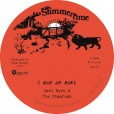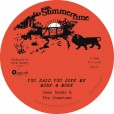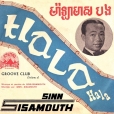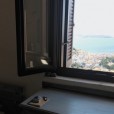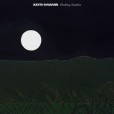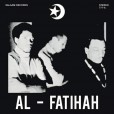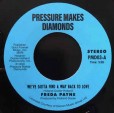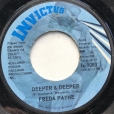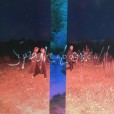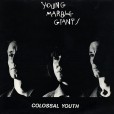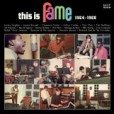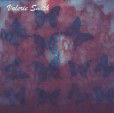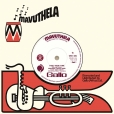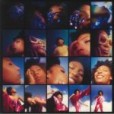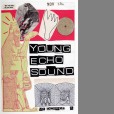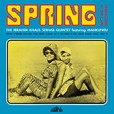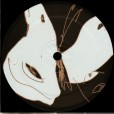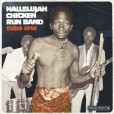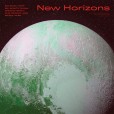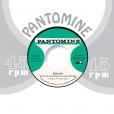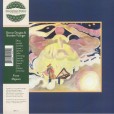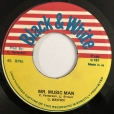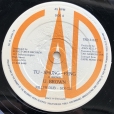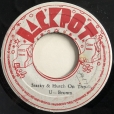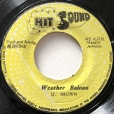Your basket is empty

With guests Kit Downes on hammond organ, and cellist Lucy Railton.
Jazz album of the month, in The Guardian: ‘an unusual path, combining spellbinding singing with wayward improv… Speak Low II foregrounds Cadotsch’s crystal-clear lyricism more than its predecessor without ever cramping the freedoms of her classy improvising partners. She brings a graceful accessibility to a personal and ingeniously offbeat setup.’
Adding songs from Salad Days, Is The War Over, the Final Day single and their Testcard EP; plus a DVD of their final US show, at Hurrah in New York in 1980.
Sowetan soul jazz — ‘marabi jjive’ — originally out in 1972, by the greatest of all mbaqanga outfits, and the house band of Gallo Africa’s Mavuthela Music subsidiary from its launch in 1964 right through to 1977. Featuring Teaspoon Ndelu, West Nkosi and Michael Xaba on saxophones, and Marks Mankwane on lead guitar.
Appetisingly this is the first of seven limited-edition singles drawn by Umsakazo from the golden age of South African township jive. Restored from the original master in Gallo’s Johannesburg tape vault; spiffily sleeved and labelled with the original artwork, with notes and recording details printed on the back.
Lovely new soul from Demae (aka Bubblerap, from hip hop crew Hawk House), with contributions from Fatima, Joe Armon-Jones, Ego Ella May and Nala Sinephro.
Fresh, personable and honest in the great tradition of London street soul, suffused with Dilla, Flying Lotus and the new UK jazz scene, this is warmly recommended. Check it out.
A zinging selection of posters by the duo behind O$VMV$M, for Bristol club nights run by the Young Echo collective. Buzzing, punky, detailed takes on Dada and surrealism. 48 pages, full colour. Lovely stuff, full of vibes. Nice present!
The landmark 1968 debut recording of pianist Ibrahim Khalil Shihab, aged twenty-two; also featuring terrific young saxophonist Winston ‘Mankunku’ Ngozi, Coltrane acolyte, on the verge of huge acclaim for his LP Yakhal’ Inkomo.
Scandalously, Paypal blocks anyone trying to buy this from us, because of the artist’s Arabic name.
‘In 1972, the country of Rhodesia — as Zimbabwe was then known — was in the middle of a long-simmering struggle for independence from British colonial rule. In the hotels and nightclubs of the capital, bands could make a living playing a mix of Afro-Rock, Cha-Cha-Cha and Congolese Rumba. But as the desire for independence grew stronger, a number of Zimbabwean musicians began to look to their own culture for inspiration. They began to emulate the staccato sound and looping melodies of the mbira (thumb piano) on their electric guitars, and to replicate the insistent shaker rhythms on the hi-hat; they also started to sing in the Shona language and to add overtly political messages to their lyrics (safe in the knowledge that the predominantly white minority government wouldn’t understand them). From this collision of electric instruments and indigenous traditions, a new style of Zimbabwean popular music — later known as Chimurenga, from the Shona word for ‘struggle’ — was born. And there were few bands more essential to the development of this music than the Hallelujah Chicken Run Band…’
Their biggest hits — along with several rare tracks — recorded between 1974 and 1979.
‘From the trios of pianists Kyle Shepherd, Bokani Dyer and Yonela Mnana, to the genre-defying exploits of guitarists Vuma Levin and Reza Khota; and from artists inspired by age-old traditions, like Lwanda Gogwana and Mandisi Dyantyis, to the cosmic explorations of Siya Makuzeni, Benjamin Jephta, Thandi Ntuli, Zoë Modiga and Shane Cooper’s Mabuta’ — Johannesburg label Afrosynth rounds up some of SA’s most talented young composers and bandleaders, as well as a wider cast of supporting musicians.
Ritchie McDonald from the Chosen Few rides Glen Brown’s stunning Dirty Harry rhythm.
Dark, haunted, portentous singing — a dream-like blend of Barry White and Keith Hudson — over some of the heaviest, most concussive reggae music of all time.
On the flip, Tommy McCook props up the body and kills it again.
Almighty, off-the-scales roots. Completely unmissable.
“Tune into the king of sounds and blues, that you will never refuse, you gots to pick and choose before you lose. On the Pantomine label. Crossroads, Caledonian Place, you know where. Do it to it, Gods Sounds, y’know.”
Bassist Dezron Douglas and harpist Brandee Younger doing over Alice and John Coltrane, The Stylistics, The Jackson 5, Pharoah Sanders, Kate Bush, Sting, and The Carpenters.
Douglas has worked with Pharoah Sanders and David Murray, amongst other jazz notables; Younger with Charlie Haden, Stevie Wonder, Lauryn Hill… Both are featured on Makaya McCraven’s Universal Beings.
‘It’s an uplifting suite of real, soulful comfort music — a spiritual salve.’
